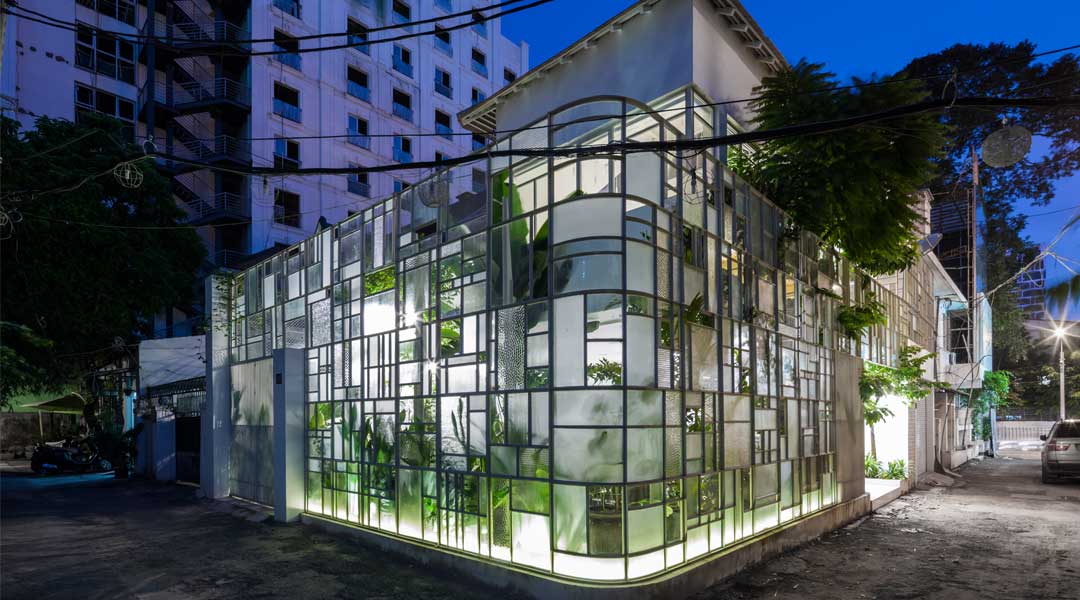
KIENTRUC O’s T House converses with its surroundings with its permeable glass enclosure
It was a sweltering hot day at the tail end of May when we arrived at the doorstep of T House, amidst a flurry of trickling sweat, dust from the nearby construction site and the barking of a distant dog. But aside from the ruckus of construction workers mid-toil, there was a hushed atmosphere within this particular hem, the Vietnamese vernacular for the maze-like alleys that wound around Ho Chi Minh City. The hustle and bustle of the city were nowhere in sight. “Good morning! Come on in!” beckons the elderly homeowner of T House, ushering in the team and the house’s principal architect Đàm Vũ towards the house’s nondescript side entrance that led us inside.
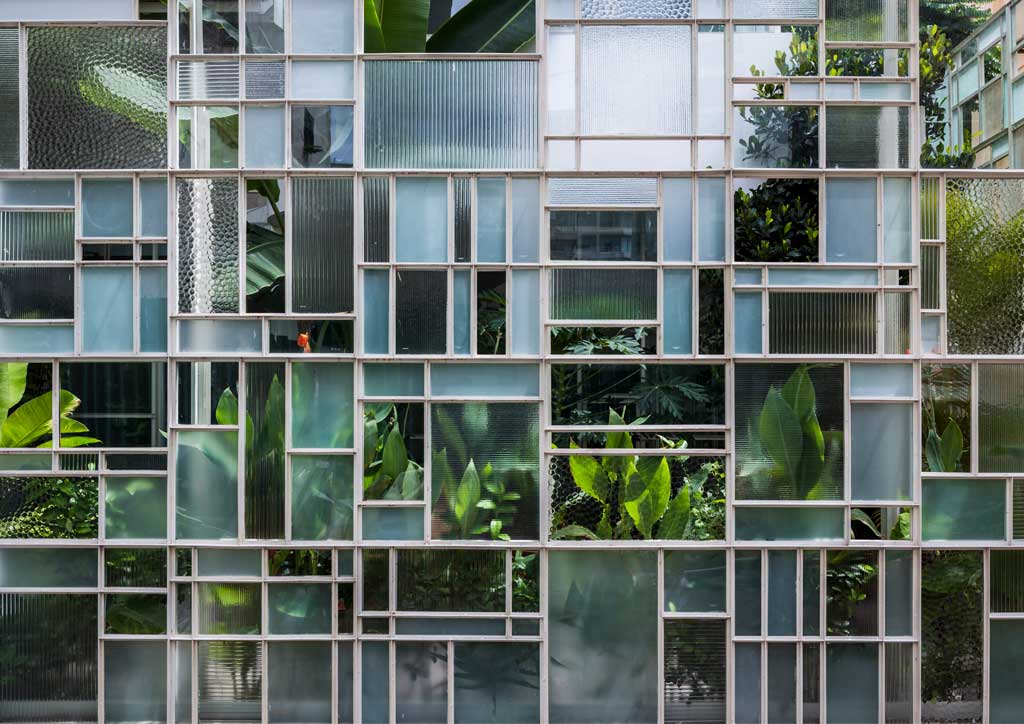
T House’s exterior is identifiable from its cookie-cutter neighbors by its 4-meter-tall wraparound metal and glass wall. While the house itself was borne out of a townhouse template constructed back in the 60s, its crystalline enclosure upfront is all its own, fascinating onlookers with its patchwork quilt of glass in various hues and textures. While walls usually give off a sense of confinement and restriction, T House’s enclosure converses with its surroundings by allowing through a view into and outside the house with its permeable glass layer. A white-painted metal frame holds the glass pieces in place reminiscent of Piet Mondrian’s Composition series. From outside, the abundant greenery from the garden created by walling off the original front entrance and façade of the home peeps through the wall apertures. This simple gesture of walling in the house’s frontage and letting nature reclaim what the city has taken was integral to Đàm Vũ’s design vision for his renovation of T House.
READ MORE: NISHIZAWAARCHITECTS revives a French colonial shophouse in Saigon
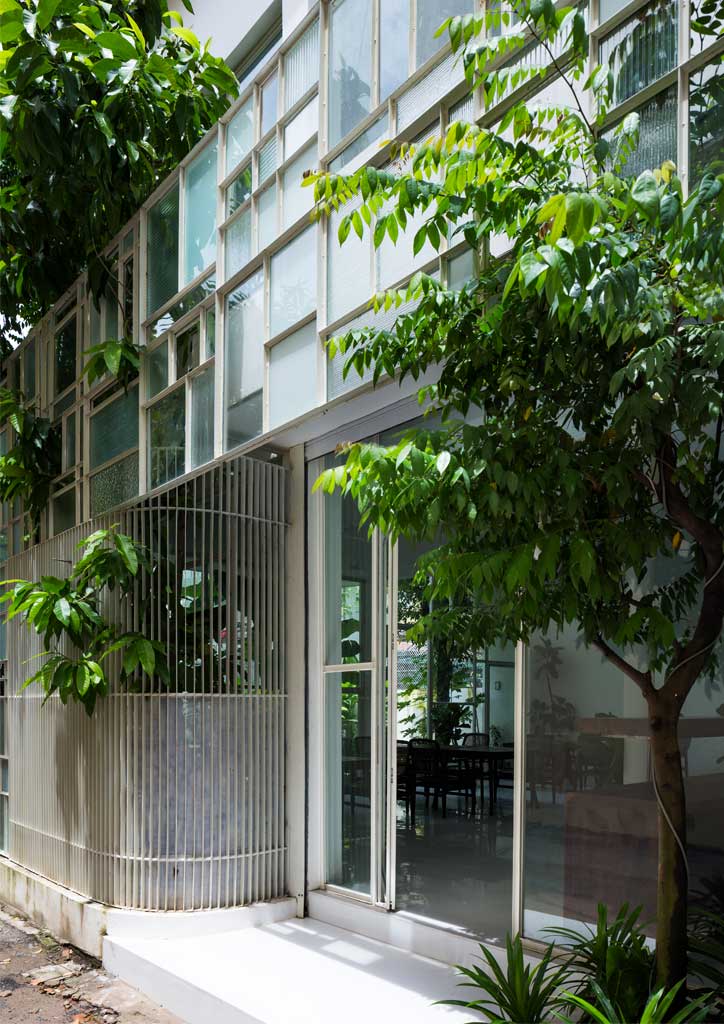

“As an old home built in the 60s, I wasn’t allowed to dramatically alter the house exterior-wise as this was stipulated on existing heritage laws,” the architect professes. “I was however inspired by my experience living in Sweden where coexistence with nature was a large part of their culture; it just feels more serene and calm to live and commune alongside nature. I was able to do this here by adding a private garden, walled off from the alley without a street entrance for the peace, serenity, and security of the homeowners.” Together with the father of the household, Đàm Vũ picked plant species specific to Vietnam for the garden, which is amply shaded by starfruit trees and festooned with potted shrubs aplenty. It became the household’s favorite space, the father mentioning how he was enthralled by how Đàm Vũ was able to carve out a green respite cocooned from the cares of city life.
READ MORE: Roots and Shoots: VTN Architects on bamboo as a primary material
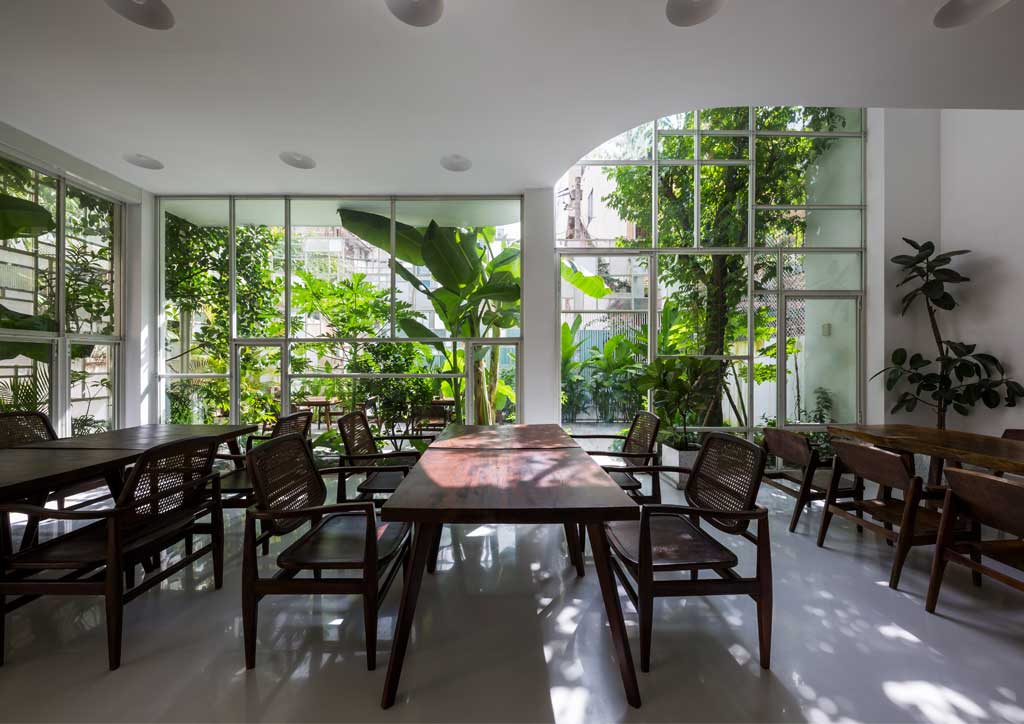
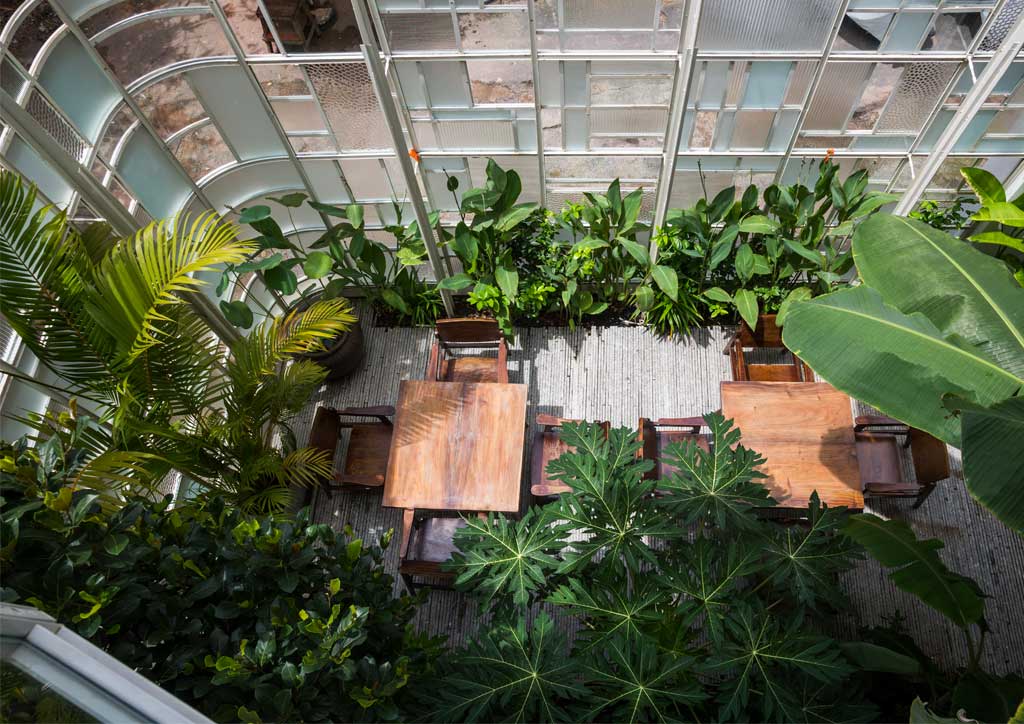
Inside, the concept of communing with Nature becomes more introspective; whereas outside he built a wall to bring in greenery, Đàm Vũ, given free rein by the homeowner, broke down walls and hollowed out portions of the second floor to encourage face-to-face interactions between the members of the household. “I am fascinated by how void-like spaces bring people together and inspire a collective feeling of awe and wonder. This is why I carved out voids that blur the boundaries between floors.” There was indeed a general feeling of openness and lightness within the spaces, an achievement for a house sitting in a cozy 161-square meter site. Communal spaces run aplenty (with the house doing double duty as a private restaurant), from the open plan dining room on the ground floor to the family room upstairs, serviced by a curvaceous spiral staircase. Only private spaces like the house’s three bedrooms and a meditation room on the second floor are ensconced in walls relegated to the sides of the house, the core exposed, open and inviting familial interaction. Đàm Vũ also made use of Le Corbusier’s iconic Modulor system as a guide to scaling the spaces to accommodate the human scale.
READ MORE: Sushi Rei restaurant in HCMC uses 4,500 cypress tiles


To make the most of the house’s green views, windows are in abundant supply, most of them operable to accommodate passive cooling and cross ventilation to beat the summer heat. The homeowners attest to the house’s effectiveness in meeting head-on the challenges brought by the hot, humid weather in the Tropics. “We have air-conditioning installed but we found ourselves rarely using it. The architect came up with a very good solution in allowing the breezes to enter the house while keeping out hot air,” the homeowner adds. High ceiling heights on the house’s two floors aid in keeping the warm air up and away from its inhabitants. Despite the lack of wide eaves to shield the front façade windows, Đàm Vũ planted trees, whose canopies deflect the rain from entering the interior spaces. The house’s downward-sloping roof conveniently cascades rainwater down the greenery when tropical showers arrive.
READ MORE: Plants in architecture improve cities, says Vo Trong Nghia partner
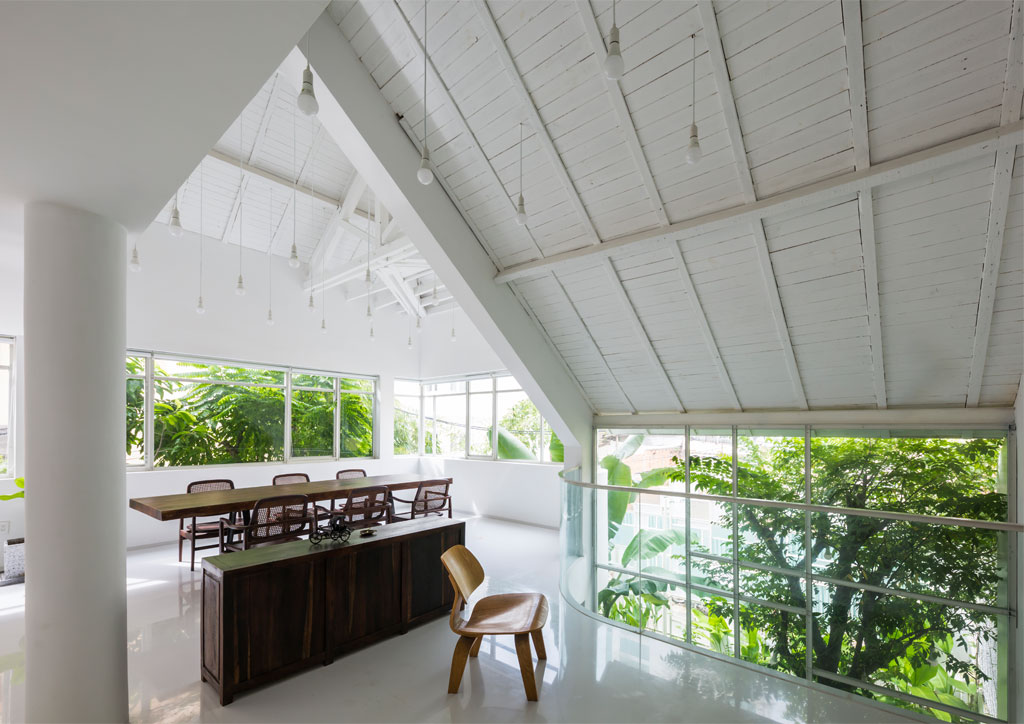
Interconnectivity is the overarching theme that pervades the spaces of T House, encouraging a commune, a reconnection, between man and nature, and between man and man. “I wanted to design a home where one can live and be serene, where one can reflect and recharge. I was glad the client and I shared the same vision,” says Đàm Vũ. It wasn’t all easy-going for the project too, which met its share of hurdles especially in gathering permits from the authorities to perform the changes the architect had in mind. Despite taking two years to complete the renovation, the client was all praises for KIENTRUC O’s design vision for his home of ten years. “The resulting output is a premium I am willing to spend on. I am satisfied with the original, eye-catching but also functional solution KIENTRUC O was able to create for me and my family. It’s the same old house but rejuvenated with new energy and spirit that bridges generations!” ![]()

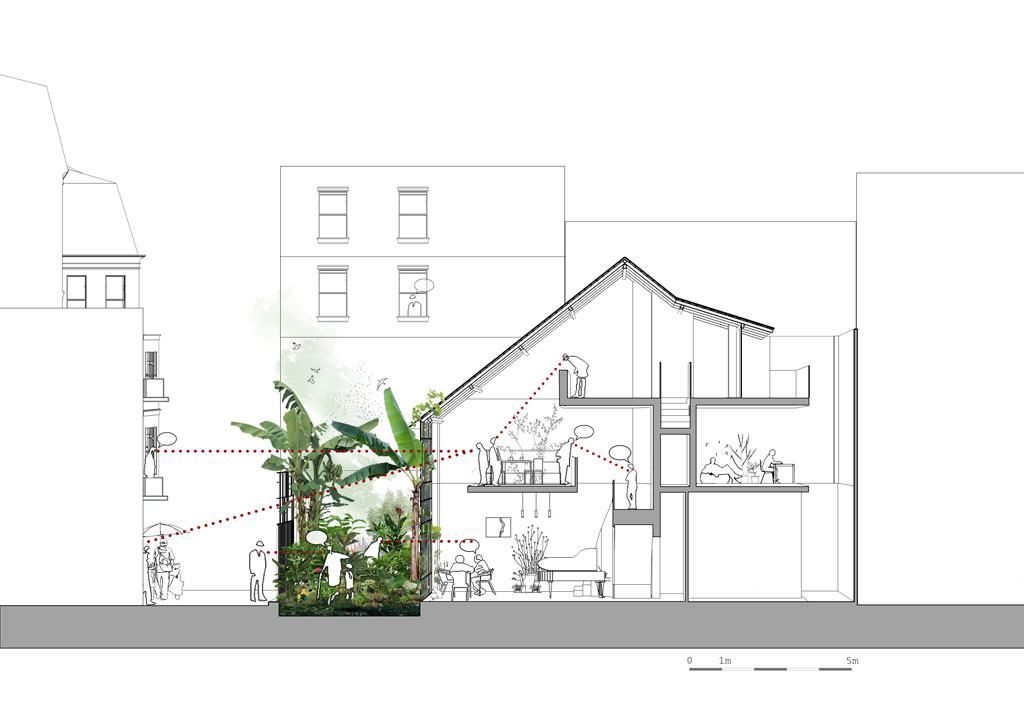
This article was first published in BluPrint Volume 4 2018. Edits were made for BluPrint online.
Photographed by Hiroyuki Oki
READ MORE: Architectural photographers we’re now following online (part 1)


